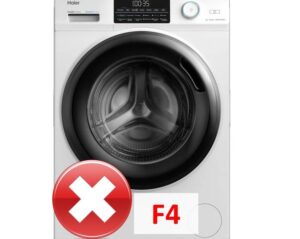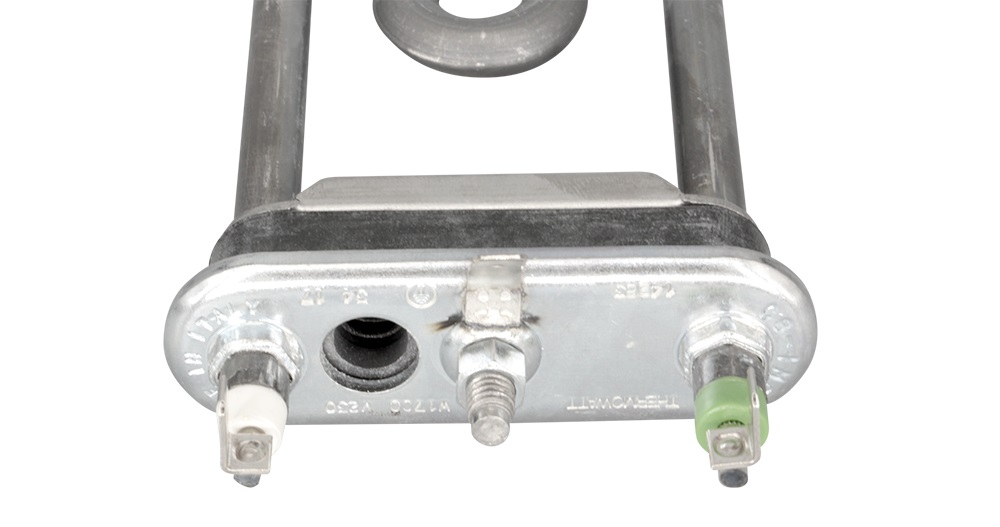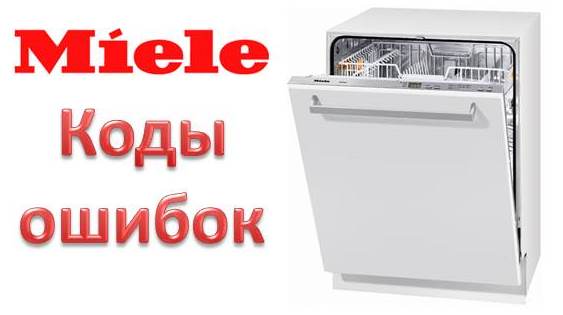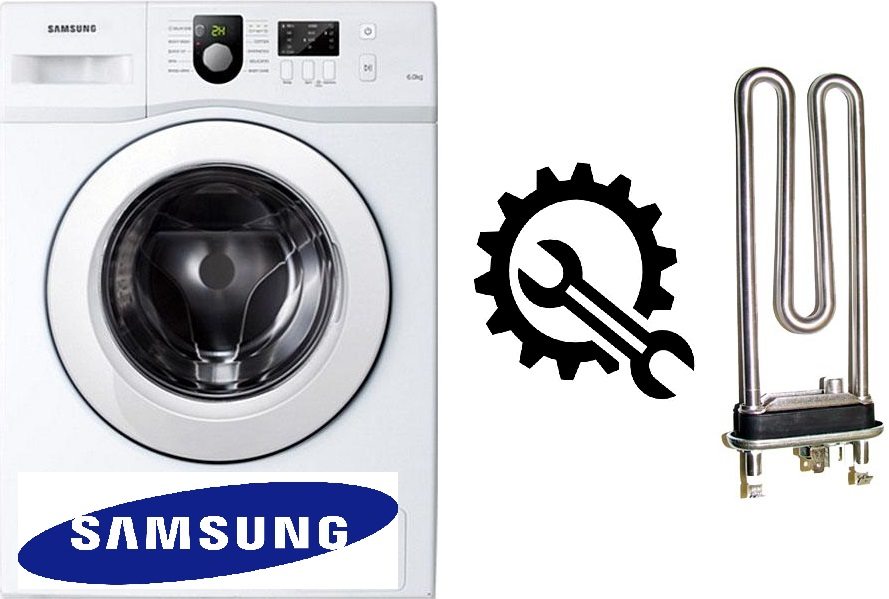Error code F4 in Haier washing machine
 If you see error F4 in a Haier washing machine, it is better to restart the machine and closely monitor its behavior. If 4-5 minutes after starting the cycle, the equipment stops again and gives a signal about a problem, then the problem is in the heating element. You will have to postpone the washing and diagnose the heating element. In what order to act and what to pay attention to, we will tell you point by point.
If you see error F4 in a Haier washing machine, it is better to restart the machine and closely monitor its behavior. If 4-5 minutes after starting the cycle, the equipment stops again and gives a signal about a problem, then the problem is in the heating element. You will have to postpone the washing and diagnose the heating element. In what order to act and what to pay attention to, we will tell you point by point.
Let's start with the basics
The error code F4 displayed on the Haier display most often indicates a broken heating element. It fails for many reasons: from natural wear and tear to overheating of the part due to a short circuit or a thick layer of scale. You can check the heating element for serviceability in one way - by ringing with a multimeter.
Error code F4 on a Haier washing machine indicates problems with water heating.
Before proceeding to direct testing, you need to find out the nominal resistance for a specific heating element. Sometimes this parameter is specified in the instructions, but it is easier and faster to calculate it yourself using the formula R= U²/P, where:
- R – required nominal resistance;
- U – voltage in the electrical network (as a rule, for most houses and apartments it is 220 Volts);
- P – power of the heating element (can be found in the instructions or on the Internet, the main thing is to look for the heater parameters for a specific Haier model).

You just need to substitute the values into the formula. If a heater with a power of 1800 watts is installed in the washing machine, then the calculation will be as follows: 220²/1800. It turns out 26.89 Ohms - the nominal resistance for heating elements of this type.The found value must be remembered and compared with the reading on the multimeter. If the tester shows a number significantly higher or lower, it means the heating element is faulty. But first we dismantle the heater and carry out testing.
We carry out testing
To measure the resistance on the heating element, you need to get to it. The instructions on what to do are simple: turn off the power to the washing machine, unscrew the back panel from the body, find the heater under the tank and free its chip from the connected wiring. Having “exposed” the part, we begin testing:
- turn on the multimeter in the “Ohmmeter” mode;
- set the limit to 200 Ohms;
- We cling to the heater terminals with probes;
- We look at the scoreboard and remember the final value.

Next, we compare the resulting value with the calculated one. If the number is close to normal, then everything is in order. It’s worse when “1” or “0” is displayed on the screen - this indicates the final “death” of the heating element, an internal break or a short circuit that has occurred. Repair will not help here, only replacement with a new element.
The resistance measured on the heating element must be equal to the nominal value, calculated using the formula R= U²/P.
Be sure to check the heater for breakdown. The fact is that a dielectric is filled between the outer tube and the inner spiral of the heating element. If the shell is damaged, this substance leaks out and comes into contact with the body of the washing machine. Then the machine begins to shock the user, which is extremely dangerous. Diagnostics is carried out as follows:
- switch the multimeter to buzzer mode;
- we check the device by closing the probes together (the device should beep and signal with a light);
- We lean one probe of the multimeter against the terminal of the heating element, and the second against its body;
- We evaluate the behavior of the tester (silence - the heating element is working, beeping - the heater needs to be replaced).
Having detected a problem, you will have to change the heating element - otherwise error F4 will not be reset. Only after the new heater has been correctly installed will the washing machine be ready to start washing.
Checking the thermistor
Sometimes fault code F4 indicates a problem with the thermistor - temperature sensor. It is attached to the body of the heating element and controls the degree of its heating. If the meter fails, the system, for safety reasons, stops the cycle and displays the corresponding error. To confirm your guess, you need to dismantle and ring the thermistor:
- remove the Haier back panel;
- find the thermistor;
- disconnect the connected wiring from the meter;
- remove the sensor;
- connect the multimeter in ohmmeter mode to the sensor contacts;
- lower the thermistor into hot water;
- evaluate the resulting indicator.
The final value depends on the water temperature. At 20°C, a working device will produce 6000 Ohms, at 50°C – 1350 Ohms. If there are significant deviations, then only replacing the sensor can correct the situation. We change the thermistor and start the wash. If F4 remains, go to the service center.
Interesting:
Reader comments
- Share your opinion - leave a comment





















Add a comment